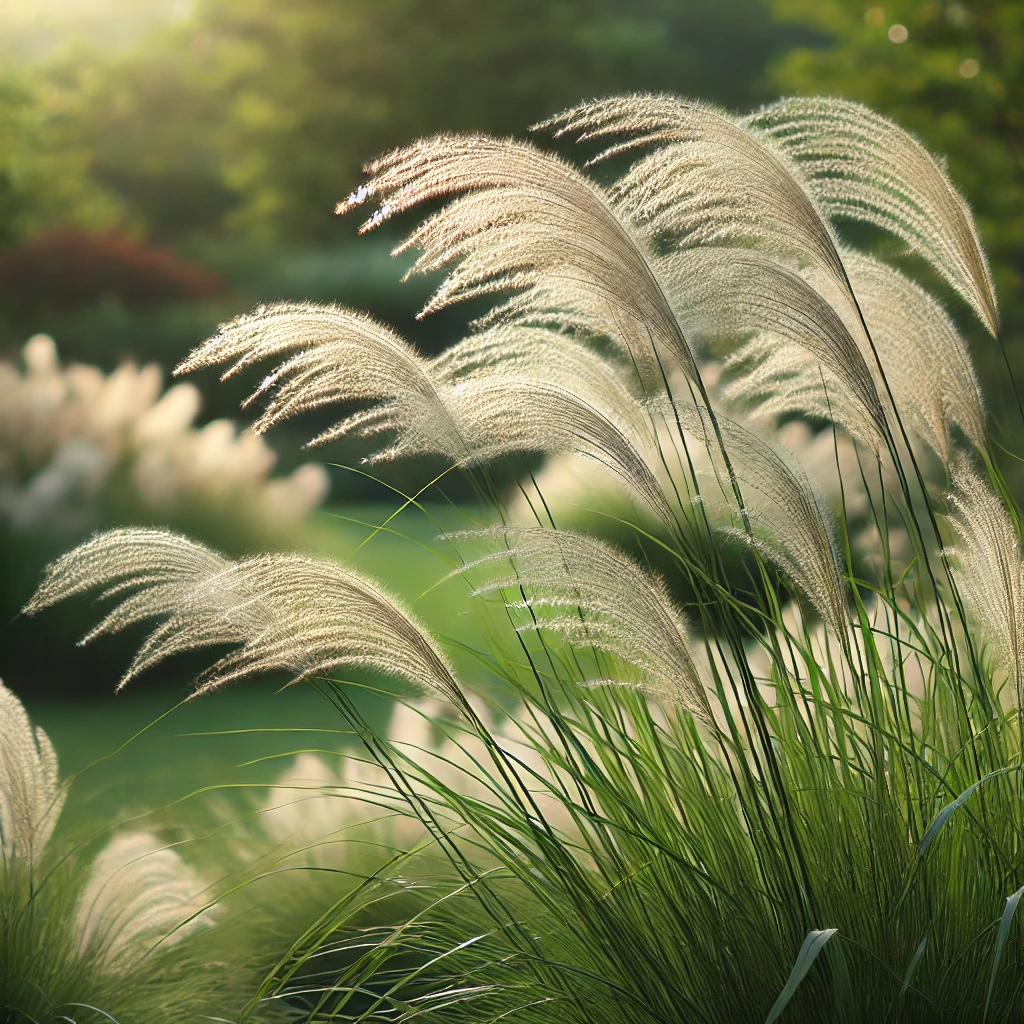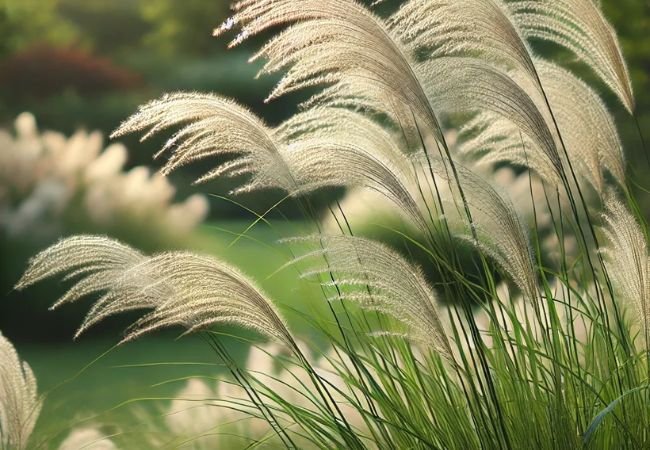Discover the beauty and versatility of Maiden Grass (Miscanthus sinensis). Learn about planting, care and creative uses for this elegant ornamental grass in your garden.
Maiden Grass, scientifically known as Miscanthus sinensis, is a popular ornamental grass that adds grace and movement to gardens. This article will explore the characteristics, care, and uses of this versatile plant.
Here’s an easy-to-read chart for Maiden Grass (Miscanthus sinensis):
| Category | Information |
|---|---|
| Botanical Name | Miscanthus sinensis |
| Common Name | Maiden Grass |
| Plant Type | Ornamental Grass |
| Hardiness Zone | USDA Zones 4–9 |
| Sun Exposure | Full Sun to Partial Shade |
| Soil Type | Well-drained, loamy, or sandy soil |
| Watering | Moderate; drought-tolerant once established |
| Growth Habit | Clumping, upright |
| Height/Spread | 3–10 ft tall / 2–6 ft wide |
| Special Features | Deer-resistant, drought-tolerant, attracts birds, year-round interest |
What is Maiden Grass?

Maiden Grass is a tall, perennial grass native to East Asia. It’s known for its:
- Arching foliage
- Feathery plumes
- Year-round interest
Key Features:
- Height: 4-9 feet (1.2-2.7 m)
- Spread: 3-6 feet (0.9-1.8 m)
- USDA Hardiness Zones: 5-9
- Sun Exposure: Full sun to partial shade
Learn more about Miscanthus sinensis varieties
Planting Maiden Grass
When to Plant
- Spring or early fall
How to Plant
- Choose a sunny location with well-draining soil
- Dig a hole twice the size of the root ball
- Place the plant at the same depth it was in the container
- Water thoroughly after planting
Detailed planting guide for ornamental grasses
Caring for Maiden Grass
Watering
- Water regularly during the first growing season
- Once established, it’s drought-tolerant
Fertilizing
- Apply a slow-release fertilizer in early spring
Pruning
- Cut back to 6-8 inches above ground in late winter or early spring
Division
- Divide every 3-4 years to maintain vigor
Tips for maintaining ornamental grasses
Popular Varieties of Maiden Grass
- ‘Gracillimus’: Fine-textured leaves with late-season plumes
- ‘Zebrinus’: Horizontal yellow bands on leaves
- ‘Morning Light’: Narrow leaves with white margins
- ‘Purpurascens’: Red-tinted foliage in fall
Explore more Miscanthus sinensis cultivars
Landscape Uses for Maiden Grass
Maiden Grass is versatile in the landscape:
- As a focal point in mixed borders
- For creating privacy screens
- In mass plantings for a dramatic effect
- Near water features for a natural look
- In container gardens for height and texture
Creative ideas for using ornamental grasses in landscapes
Benefits of Maiden Grass
- Low maintenance once established
- Attracts birds and provides winter interest
- Helps control erosion
- Drought-tolerant
Potential Drawbacks
- Can be invasive in some regions
- May require staking in windy areas
- Slow to emerge in spring
Information on controlling invasive Miscanthus
Companion Plants for Maiden Grass
Consider pairing Maiden Grass with:
- Black-Eyed Susans (Rudbeckia)
- Coneflowers (Echinacea)
- Russian Sage (Perovskia)
- Sedum ‘Autumn Joy’
These combinations create beautiful contrasts in texture and color.
Winter Interest
Maiden Grass provides winter interest through:
- Dried foliage and seed heads
- Movement in winter winds
- Catching snow for a picturesque scene
Tips for using grasses for winter interest
Maiden Grass (Miscanthus sinensis) is a beautiful and versatile ornamental grass that can enhance various garden styles. With its graceful form, seasonal interest, and low maintenance requirements, it’s an excellent choice for both novice and experienced gardeners. By understanding its needs and potential uses, you can successfully incorporate this elegant grass into your landscape design.
Remember to check local regulations regarding Miscanthus sinensis, as it can be invasive in some areas. With proper care and placement, Maiden Grass can be a stunning addition to your garden, providing beauty and movement throughout the seasons.
Explore more about ornamental grasses in landscaping








Leave a Reply